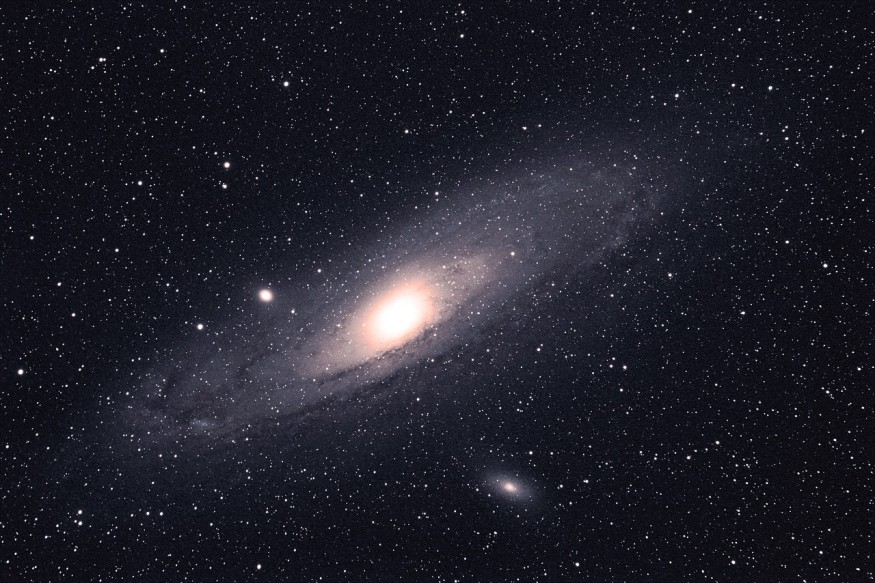The Andromeda Galaxy (M31) is one of the most venerable and visible objects in the universe that continues to surprise scientists. Astronomy reports that the most recent discovery was made by a group of amateur astronomers who found a never-before-seen nebula sitting at its southeast part and stretches half the galaxy's size.
The amateur astronomers spotted the strange ultra-faint dwarf galaxy on the outer rims of the Andromeda Galaxy. It was confirmed by professional astronomers who later discovered that the dwarf galaxy called Pegasus V has relatively few heavy elements and is likely a fossil of the earliest galaxies.

A Serendipitous Find
Yann Sainty, a French astroimager, identified the characteristic in photographs collected with an Oxygen-III (OIII) filter last year and collaborated with Marcel Drechsler and Xavier Strottner to process and analyze the data. The feature is known as Strottner-Drechsler-Sainty Object 1.
They then collaborated with a team of expert astronomers and astroimagers to confirm the discovery, Astronomy reported. Last month, the researchers published their findings in the Research Notes of the AAS, as well as a gorgeous, heavily processed image on the astroimaging website Astrobin.
The Andromeda observations began as a side project for the trio, who had originally collaborated for another reason. Drechsler and Strottner kept a list of planetary nebulae and requested Sainty to capture numerous known and candidate objects.
Sainty went throughout France looking for the darkest spots for his mobile observing rig, which includes a 4.2-inch Takahashi refractor and a ZWO CMOS astronomical camera. Drechsler said that Sainty chose to focus on a nice and easy endeavor of observing the Andromeda Galaxy.
Sainty took more photos until the fall of 2022, totaling 111 hours of exposure. The crew became increasingly certain that they had discovered something real and a previously unknown object in the cosmos.
READ ALSO: Andromeda Galaxy Shows Signs of Cannibalism, Showing Galaxies Grow by Eating Smaller Systems
Confirming the Results: Newly Discovered Nebula Is the Fossil of the Earliest Galaxies
According to Science Daily, astronomers conducted deeper studies using the bigger 8.1-meter Gemini North telescope equipped with the GMOS instrument and showed faint stars in Pegasus V, indicating that it is an ultra-faint dwarf galaxy on the fringes of the Andromeda Galaxy. In Hawai'i, Gemini North is one-half of the International Gemini Observatory.
The Gemini studies indicated that the galaxy appears to be severely low in heavy elements when compared to similar dwarf galaxies, implying that it is very ancient and may be a fossil of the Universe's early galaxies.
Michelle Collins, an astronomer at the University of Surrey in the UK, said that it is an extremely faint galaxy with stars that formed very early in the history of the universe. The findings mark the first time this kind of galaxy has been found around the Andromeda Galaxy using an astronomical survey that was not designed for the task.
The faintest galaxies are thought to represent the remains of the very first galaxies to form, and these galactic relics offer information on the development of the first stars.
Finding dim galaxies like this is thus a vital, but challenging, task. Part of the difficulty is that these faint galaxies are incredibly difficult to see, appearing as a few scattered stars concealed in the vastness of the sky.
RELATED ARTICLE: Andromeda Galaxy: How the Most Detailed Radio Imagery of the Galaxy Was Taken by the Sardinia Telescope
Check out more news and information on Space on Science Times.










